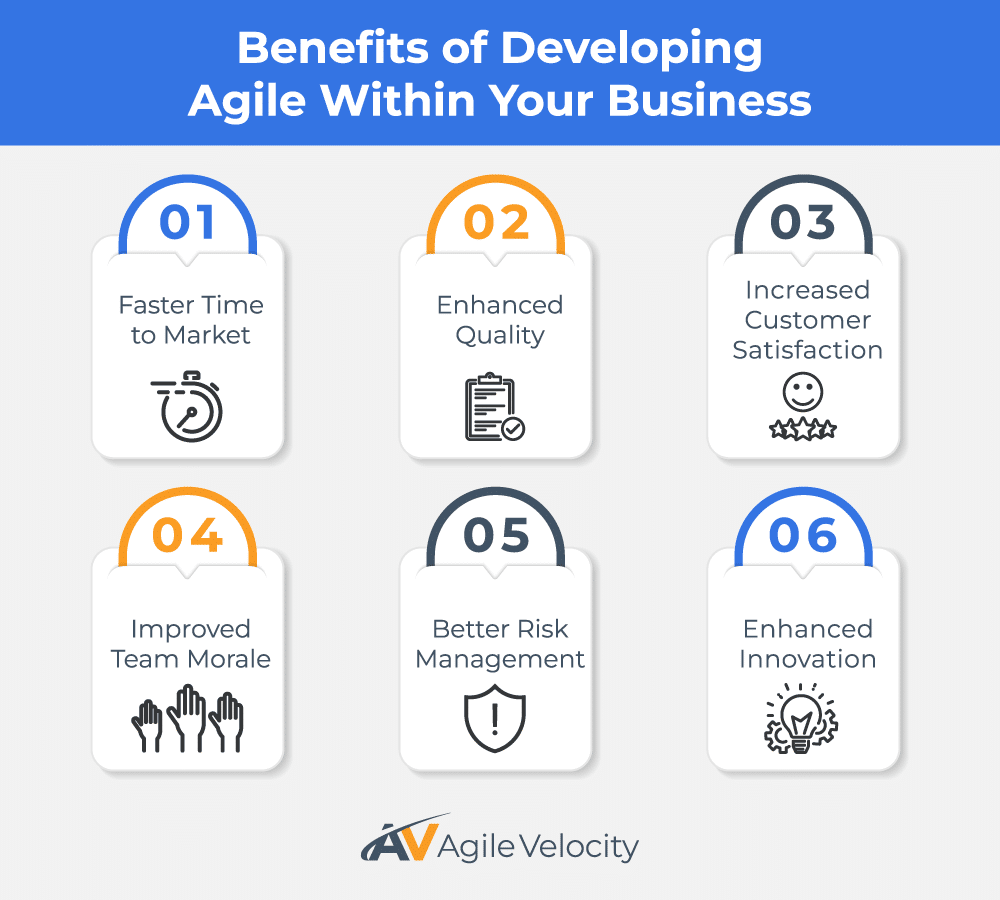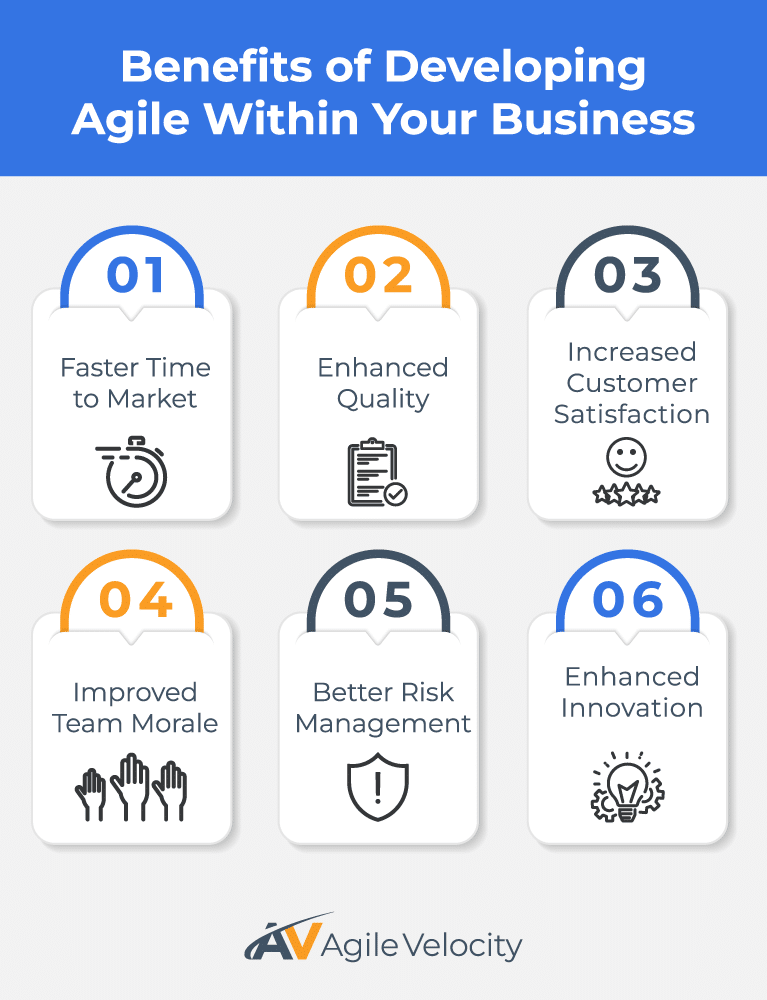Organizations must adapt swiftly to stay competitive in the technology landscape. Agile Transformation has become a critical endeavor for businesses aiming to enhance their productivity, deliver value faster, and improve quality. This comprehensive guide explores powerful best practices for implementing Agile Development strategies effectively within your organization. Whether you’re new to Agile or looking to refine your existing practices, these insights will help you master your Agile Transformation journey.
Understanding Agile Development Strategies
Agile Development is a collaborative, iterative approach to project management and software development that focuses on delivering value incrementally. It emphasizes flexibility, customer satisfaction, and continuous improvement. In technology-driven environments, Agile enables teams to respond swiftly to changes, ensuring that products and services evolve with market demands.
Key Components and Principles of Agile
At the core of Agile Methodologies are principles that prioritize individuals and interactions over processes and tools. Key components include:
- Iterative Development: Breaking projects into manageable units called Sprints or Iterations allows teams to deliver functional pieces of a product regularly.
- Collaborative Teams: Emphasizing teamwork and open communication ensures that everyone is aligned with the project’s goals.
- Customer Collaboration: Involving customers throughout the development process provides continuous feedback and helps tailor the product to their needs.
- Responding to Change: Adapting plans based on feedback and changing requirements keeps the project relevant and valuable.
Benefits of Implementing Agile to Improve Business Outcomes
The benefits of implementing Agile extend far beyond improved development practices. Agile strategies empower organizations to accelerate delivery, improve team collaboration, and enhance product quality due to their adaptive, iterative nature. By embracing Agile, businesses can better meet customer demands and achieve higher satisfaction rates while maintaining a competitive edge in rapidly changing markets.
Adopting Agile practices can lead to significant business benefits. Discover how adopting Agile can revolutionize your business outcomes and drive success.


- Faster Time to Market: Accelerated delivery of products and services keeps you ahead of the competition.
- Enhanced Quality: Continuous testing and feedback loops improve product quality and reduce defects.
- Increased Customer Satisfaction: Regular engagement ensures products meet customer needs and expectations.
- Improved Team Morale: Empowered teams with clear goals and autonomy experience higher job satisfaction.
- Better Risk Management: Agile’s iterative approach allows teams to identify and address risks early, minimizing potential setbacks.
- Enhanced Innovation: Agile fosters a culture of experimentation and continuous improvement, encouraging creative solutions and innovative thinking.
Essential Best Practices for Implementing Agile Development
Successfully implementing Agile requires more than just adopting new processes; it involves a shift in mindset and culture.
Prioritizing Outcomes Over Rigid Framework Adherence
Focus on the desired business outcomes rather than strictly following a specific framework. Agile is about flexibility, so adapt practices to suit your organization’s unique needs. Avoid becoming overly prescriptive; instead, emphasize delivering value and achieving results.
Aligning Agile Initiatives with Overall Business Objectives
Ensure that Agile initiatives support your organization’s strategic goals. This alignment fosters organizational agility, enabling teams to make decisions that drive business success. Regularly communicate objectives to keep teams focused and informed.
Building a Collaborative and Transparent Team Culture
Cultivate a culture where team members openly share ideas and feedback. Transparency builds trust and encourages collective ownership of projects. Implement practices like Daily Scrum events to maintain open communication and address challenges promptly. Additionally, promoting a safe environment where team members feel comfortable expressing concerns leads to more effective problem-solving and innovation.
Effective Communication Strategies to Support Agile Transformations
Clear and continuous communication is vital. Use simple, jargon-free language to ensure everyone understands project goals and updates. Encourage collaborative writing between team members to enhance clarity in documentation. Regularly share progress through presentations or interactive sessions to keep stakeholders engaged.
Evaluating Organizational Readiness and Maturity for Agile Transformation
For Agile Transformation to be effective, agility must permeate every level of the organization.
Assess your organization’s current capabilities and willingness to embrace change. Tools like Path to Agility® Navigator can help visualize what needs to change, track progress, and define next steps toward achieving true agility (Path to Agility). Understanding your starting point ensures a tailored approach to transformation.
Key Steps to Instill an Agile Mindset at Every Organizational Level
- Leadership Commitment: Leaders must champion Agile values and lead by example.
- Tailored Training: Provide Agile Training through avenues such as workshops to equip teams with necessary skills.
- Empowerment: Encourage teams to make decisions and take ownership of their work.
- Feedback Mechanisms: Establish regular retrospectives to reflect on processes and implement improvements.
The Role of Leadership in Championing Agility and Change
Leaders play a crucial role in fostering an Agile culture. They should:
- Embrace Change: View change as an opportunity for growth.
- Promote Transparency: Share information openly to align the team.
- Support Teams: Remove obstacles and provide resources needed for success.
- Encourage Continuous Learning: Advocate for ongoing development and knowledge sharing.
- Measure and Communicate Progress: Regularly assess and communicate the transformation’s progress to keep the team motivated and informed.
Is Your Organization Truly Ready?
The Agile Transformation Journey
The journey towards Agile Transformation involves navigating through distinct phases, each essential for achieving true agility within an organization. Successfully transitioning to Agile requires not only implementing iterative and flexible methodologies but also embracing strategies to tackle and conquer resistance. Understanding these key phases helps prepare teams for the changes in mindset and practices that Agile demands, ensuring a smoother transition as they recalibrate towards innovative and collaborative ways of working.
Key Phases Involved in a Successful Agile Transformation
To fully harness the benefits of Agile, organizations must navigate through several pivotal phases of Agile Transformation. Each phase represents a step towards integrating Agile into the fabric of the organization, from initial awareness and commitment to complete implementation and refinement.
- Assessment and Planning: Identify goals, challenges, and resources.
- Pilot Implementation: Start with a small team or project to test Agile practices.
- Scaling Agile Practices: Gradually expand Agile practices and principles across the organization.
- Continuous Improvement: Regularly review and adapt processes for optimization.
Strategies for Overcoming Resistance and Common Obstacles
As teams progress, they will encounter challenges, including resistance to change, which necessitates employing strategic approaches to manage and mitigate these barriers effectively. Understanding both the key phases and strategies for addressing resistance enables a smoother transition to an Agile culture, setting the foundation for sustained success and innovation.
- Effective Communication: Clearly articulate the reasons for change and address concerns.
- Inclusive Decision-Making: Involve team members in planning to increase buy-in.
- Supportive Environment: Create a safe space for feedback and experimentation.
- Gradual Implementation: Introduce changes incrementally to prevent overwhelming teams.
- Celebrate Small Wins: Recognize and celebrate milestones to build momentum and morale.
How Agile Transformation Enhances Value Delivery and Quality
By embracing Agile, organizations deliver value incrementally, allowing for early identification of issues and continuous refinement. This leads to higher-quality products and services that better meet customer needs. Agile practices also enable teams to respond quickly to market changes, maintaining a competitive edge.
Having a clear plan ensures that the transformation remains focused and that teams are aligned. It enables organizations to measure success, celebrate milestones, and make informed adjustments along the way. Additionally, setting specific, achievable goals helps maintain momentum and keeps the transformation on track.
Integrating Lean Portfolio Management and Agile Change Management
Integrating Lean Portfolio Management and Agile Change Management is crucial for organizations aiming to optimize resource allocation and enhance strategic alignment. This section explores how combining these two approaches can streamline processes, improve decision-making, and effectively manage change. By leveraging the strengths of Lean Portfolio Management and Agile, companies can ensure that they efficiently pursue projects that align with business goals, fostering agility and responsiveness across the organization.
The Role of Lean Portfolio Management in Maximizing Value Flow
Lean Portfolio Management aligns business strategy with execution. It ensures that investments are directed toward initiatives that provide the highest value and supports Agile teams in delivering efficiently. Key benefits include:
- Strategic Alignment: Ties portfolio investments to organizational goals.
- Resource Optimization: Allocates resources based on value and impact.
- Enhanced Responsiveness: Enables quick pivots in response to market feedback.
Implementing Agile Change Management to Support Enduring Transformations
Agile Change Management focuses on the human aspects of transformation. It involves:
- Engaging Stakeholders: Involving those affected by changes to foster acceptance.
- Transparent Communication: Keeping everyone informed about changes and their impact.
- Continuous Feedback: Using insights to refine processes and address concerns.
Combining Lean principles with Agile practices optimizes resource utilization and enhances responsiveness. This synergy leads to improved operational efficiency and a strategic advantage in rapidly changing markets.
Role and Impact of Agile Coaching and Training

Agile coaching and training play a pivotal role in guiding organizations through their Agile Transformation journey. These elements equip teams with essential skills and knowledge while fostering an Agile mindset necessary for adapting to dynamic business environments. By leveraging professional coaching and tailored training programs, organizations can enhance team collaboration, streamline processes, and ensure a successful implementation of Agile.
Agile Coaching provides guidance and expertise to teams and organizations. Coaches help:
- Educate Teams: Provide knowledge on Agile principles and practices.
- Facilitate Change: Assist in implementing new processes and overcoming obstacles.
- Enhance Team Dynamics: Improve collaboration, communication, and conflict resolution.
- Encourage Continuous Improvement: Foster a culture of learning and adaptation.
Benefits of Comprehensive Agile Training Workshops for Skill Enhancement
Training workshops equip team members with the skills needed to excel in an Agile environment. Benefits include:
- Improved Competency: Enhanced understanding of Agile roles and practices.
- Increased Confidence: Teams feel prepared to tackle challenges.
- Consistent Practices: Standardized approaches across the organization.
- Enhanced Collaboration: Shared language and understanding improve teamwork.
Customized training ensures that the specific needs of different groups are met. Tailoring content to the organization’s context maximizes relevance and impact, whether for corporate teams with specific challenges or public cohorts seeking general Agile proficiency.
Incorporating AI Solutions into Agile Practices
Incorporating AI solutions into Agile practices provides an opportunity for organizations to enhance their efficiency and decision-making capabilities. By leveraging AI technologies, Agile teams can automate repetitive tasks, analyze complex datasets, and deliver more accurate insights, leading to accelerated innovation and improved outcomes. This integration facilitates smarter resource management and proactive risk mitigation, positioning businesses to maintain a competitive advantage in rapidly evolving markets.
Applications of AI for Optimizing Productivity and Resource Management
AI tools can:
- Predict Project Delays: Using machine learning to foresee potential issues.
- Optimize Resource Allocation: Balancing workloads and maximizing efficiency.
- Identify Process Improvements: Analyzing workflows to suggest enhancements.
Practical Examples of AI Enhancing Agile Practices
- Automated Testing: Reducing time and effort in quality assurance.
- Intelligent Automation: Streamlining workflows and eliminating bottlenecks.
- Data-Driven Decision Making: Leveraging analytics to guide strategy.
Ensuring Sustainability and Continuous Improvement Post-Transformation
This section delves into the critical and ongoing process of ensuring sustainability and continuous improvement after an Agile Transformation. Maintaining agility post-transformation requires a focus on perpetual learning and adaptation, fostering a culture that evolves with changing business needs. By implementing strategies to sustain momentum, organizations can enhance their agility and remain competitive in dynamic markets.
Strategies for Maintaining and Enhancing Agile Practices Post-Transformation
- Regular Retrospectives: Continuously assess and improve processes.
- Knowledge Sharing: Encourage open exchange of ideas and experiences.
- Adaptability: Stay responsive to changes in the market and technology.
- Measure Progress: Use metrics to track success and identify areas for improvement.
Empowering Teams to Achieve Self-Sufficiency and Accountability
Foster a culture where teams take ownership of their work. Empowered teams are more engaged and motivated, leading to sustained success. Encourage:
- Decision-Making Authority: Allow teams to make choices within their scope.
- Transparent Goals: Clearly define expectations and objectives.
- Supportive Leadership: Provide guidance while promoting autonomy.
Encouraging Ongoing Learning, Adaptation, and Innovation
Promote continuous learning through:
- Training Opportunities: Offer workshops and educational resources.
- Innovation Time: Allocate time for teams to explore new ideas.
- Feedback Culture: Regularly seek and act on input from team members.
Build High-Performing Teams
Success Stories and Testimonials
Discover how businesses have transformed through Agile by examining their documented outcomes. These case studies reveal tangible results, highlighting how companies have leveraged Agile practices to enhance efficiency, boost customer satisfaction, and achieve significant growth in competitive markets.
Southwest Airlines embraced Agile Transformation to improve operational efficiency. By adopting Agile practices through the Scaled Agile Framework (SAFe®), they achieved significant operational improvements, including increased predictability through better planning and empowered teams, leading to a Program Predictability Metric improvement from 63.7% to 105% across four PI’s.
Texas Mutual Insurance chose self-disruption over complacency. Their Agile Transformation journey led to improved delivery cadence, improved customer service, and enhanced company culture and collaboration.
Demonstrating Tangible Outcomes from Agile Transformation
These organizations experienced:
- Reduced Time to Market: Faster delivery of products and services.
- Improved Quality: Higher success rates and fewer defects.
- Increased Employee Engagement: Teams were more motivated and productive.
Lessons and Best Practices Derived from Real-World Applications
- Leadership Commitment Is Crucial: Success starts at the top.
- Focus on Value Delivery: Keep the customer at the center.
- Embrace Change: Be willing to adapt and evolve.
- Continuous Improvement: Never stop refining processes and practices.
The Path Forward: Sustaining Agile Success

Mastering Agile Transformation is a journey that requires commitment, collaboration, and a focus on delivering value. By implementing these powerful best practices, organizations can navigate the complexities of change, enhance their agility, and achieve sustainable success in today’s fast-paced technology landscape.
If you’re ready to embark on your Agile Transformation journey or enhance your current practices, consider leveraging expert guidance and proven frameworks to achieve your goals. At our team at Agile Velocity, our expertise in Agile Transformation, coupled with our unique tools like Path to Agility Navigator, empowers organizations to reach their goals.



